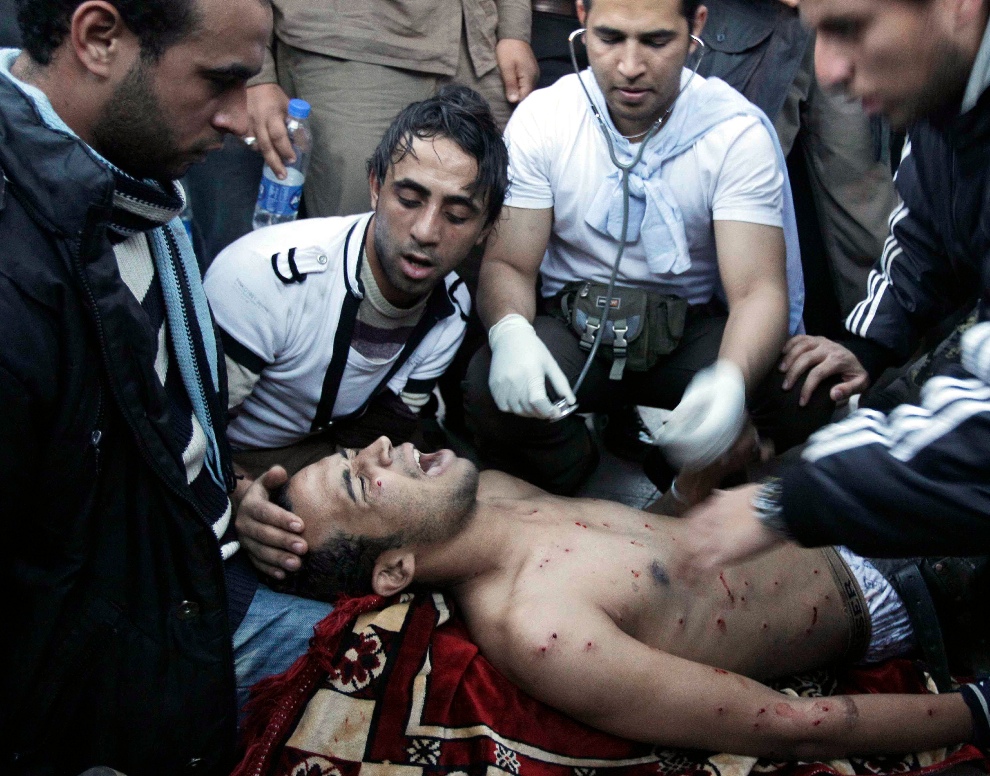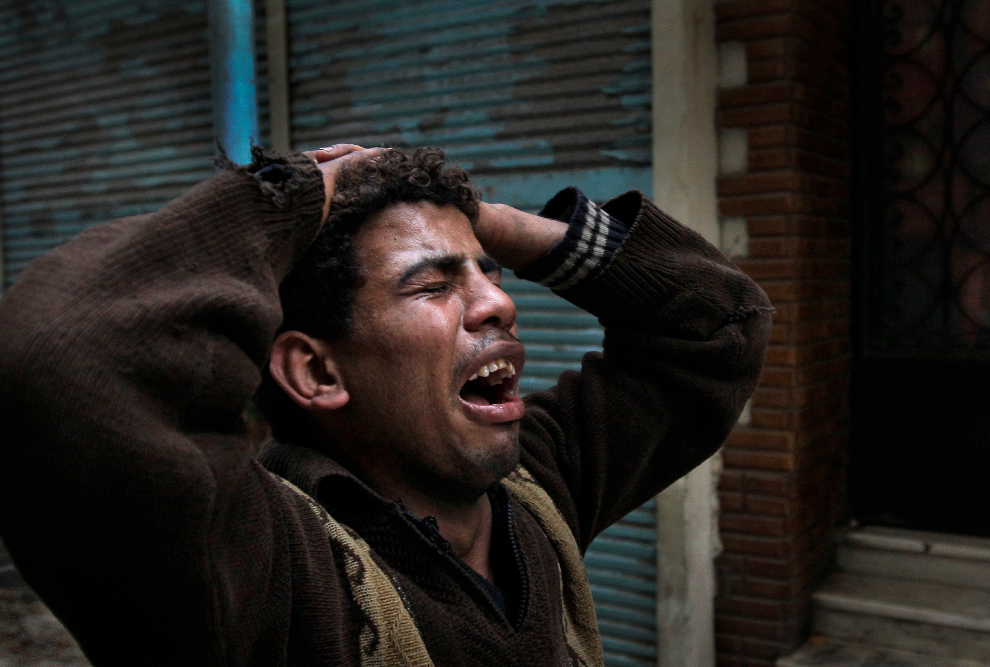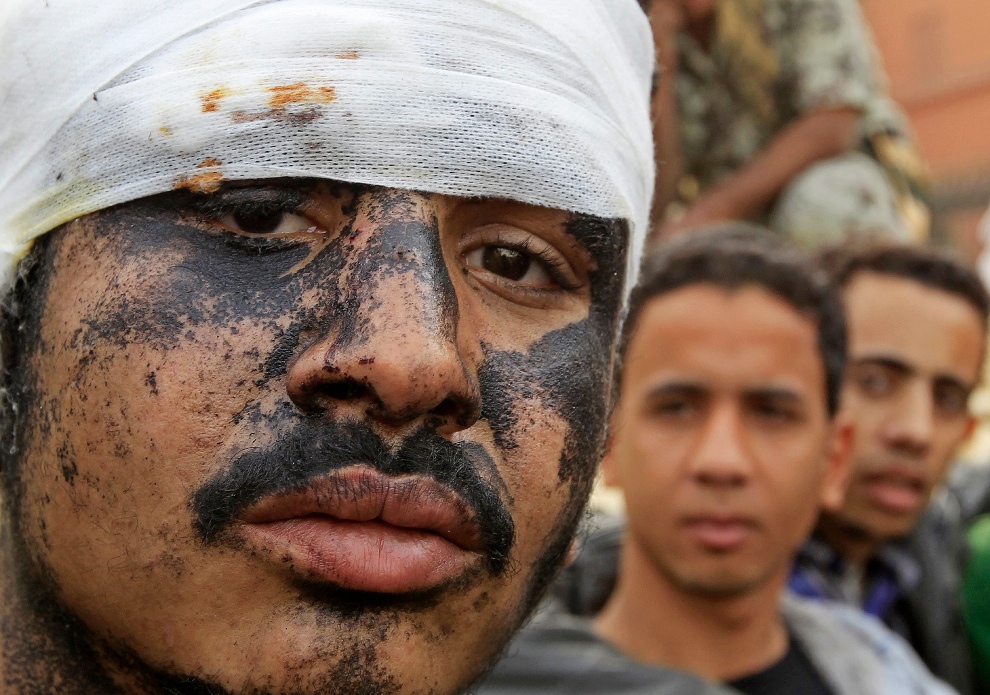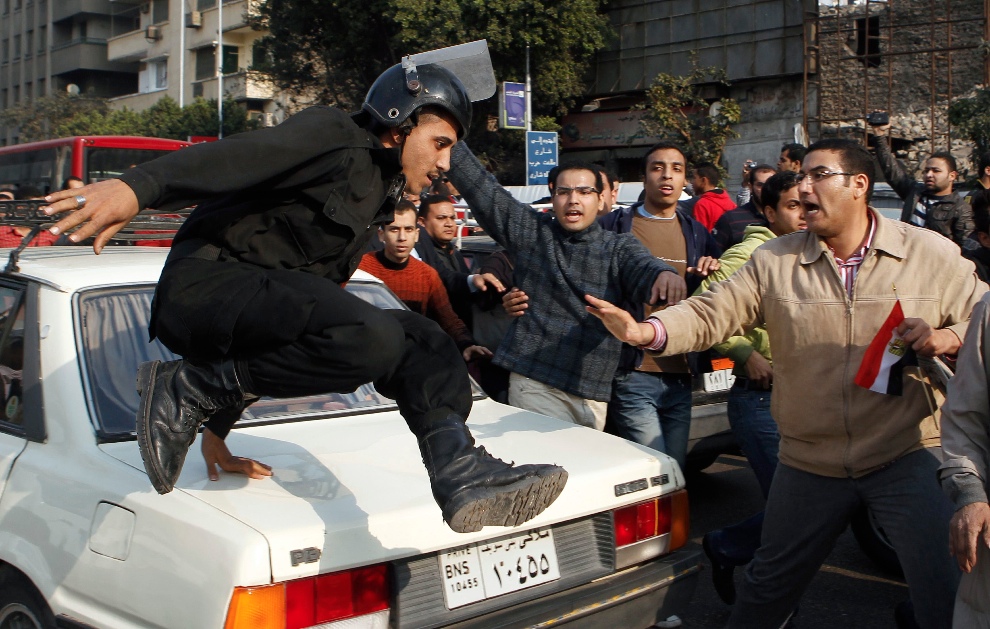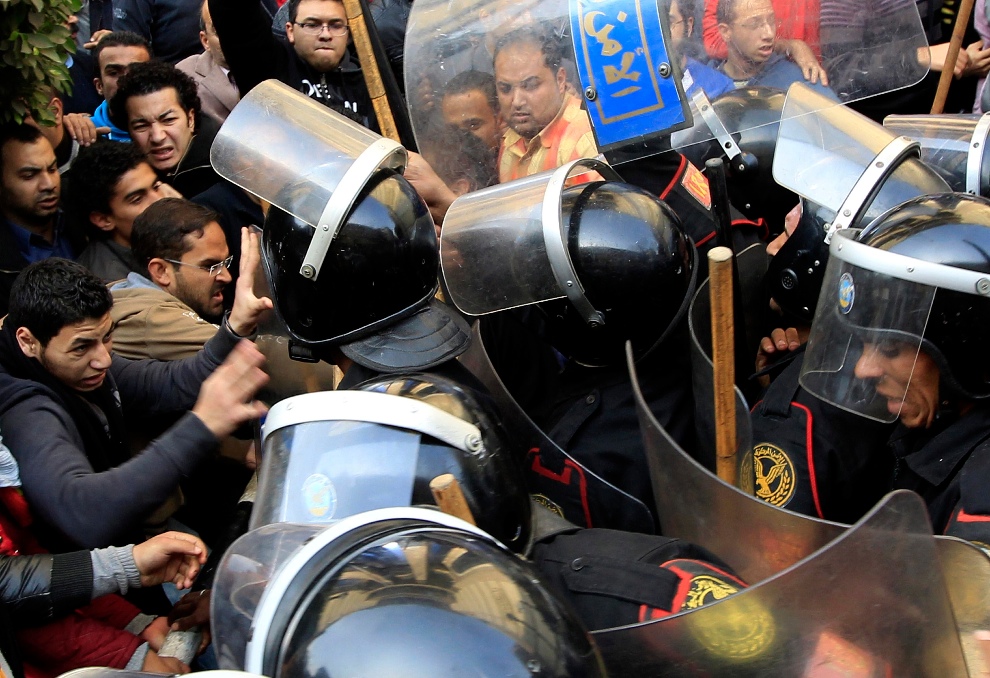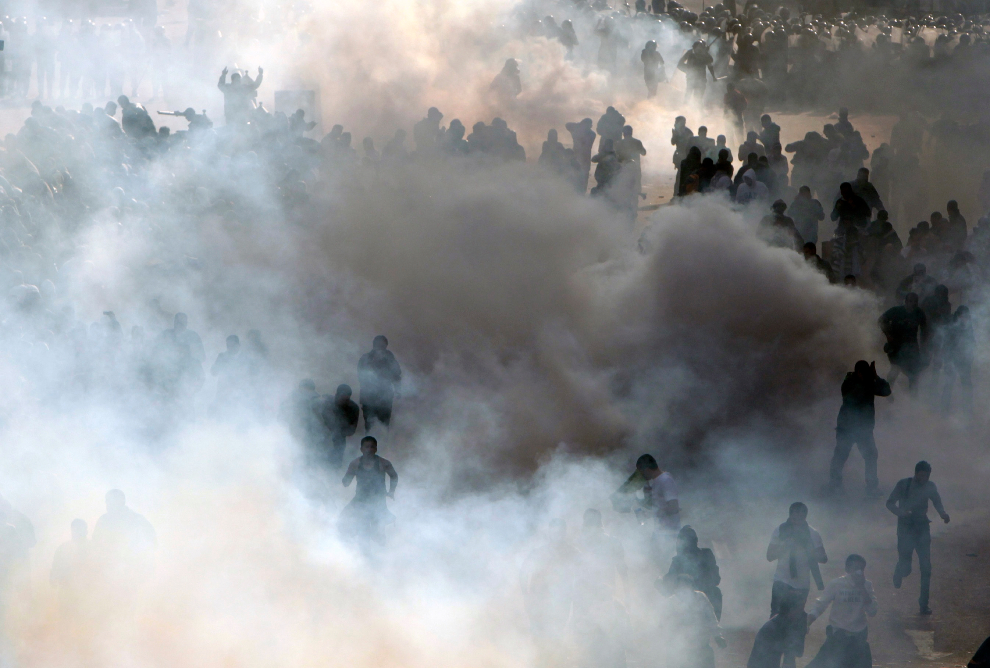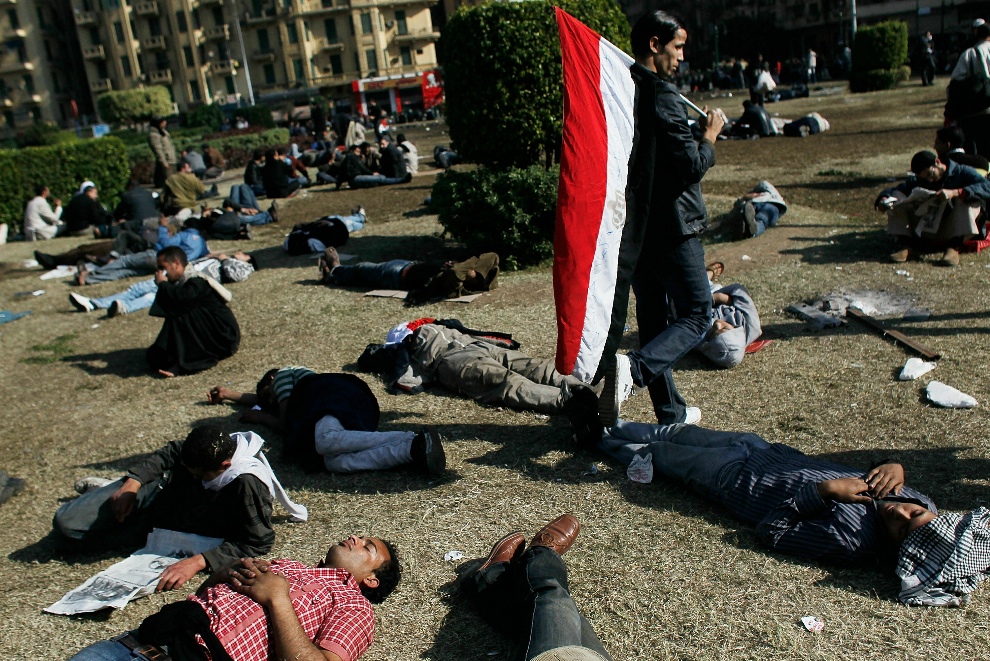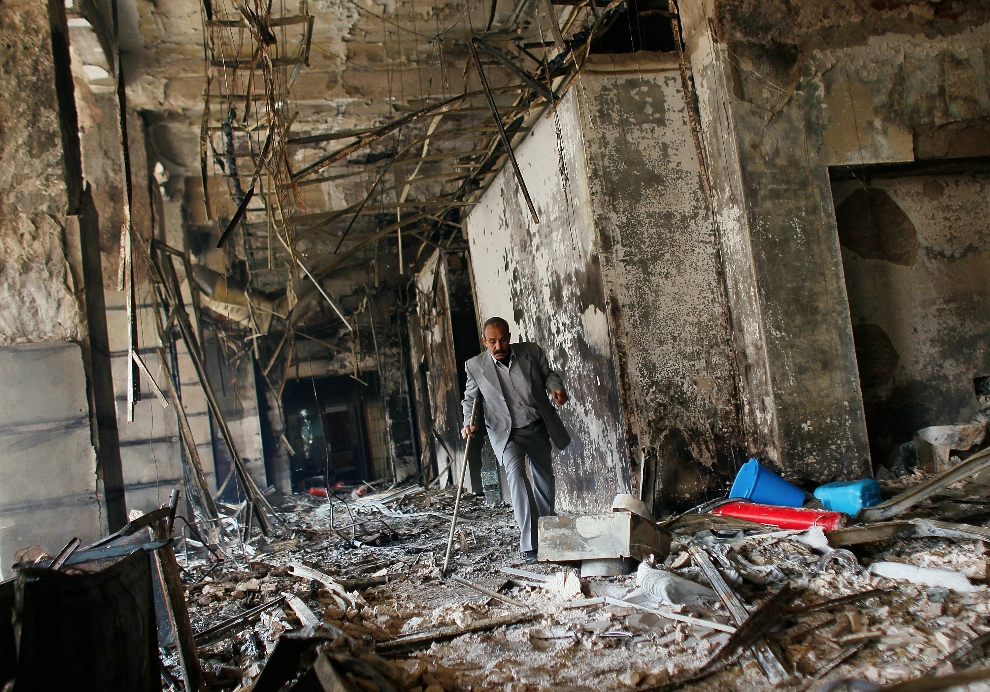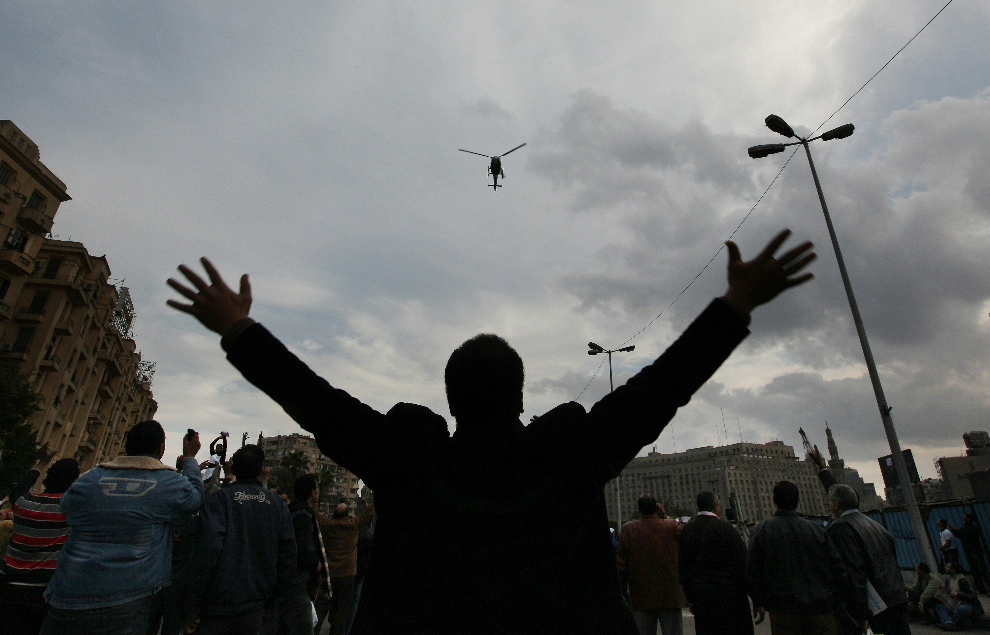A harrowing, historic week in Egypt
They have been days of chants and chaos, bloodshed mixed with moments of breathtaking solidarity between the protesters and the soldiers sent to subdue them. The flame of social unrest that first flickered in Tunisia has spread to Egypt, culminating with the announcement Tuesday by President Hosni Mubarak that after three decades in power, he would not run for another term. The clashes left government buildings in ashes, stores ransacked, and an economy teetering. Cairo's international airport teemed with Americans and other foreigners trying to flee; Egypt's tourism industry froze. At Cairo's Liberation Square, Mubarak's announcement was met with jeers and calls for an immediate resignation. Pro-Mubarak forces struck back, attacking the protesters in waves. The country of 80 million, rich in history but bereft of personal freedoms, awaits the next stage. Collected here are images from the last week focusing inside Egypt. -- Lloyd Young (45 photos total)

President Hosni Mubarak, in a taped speech shown Tuesday night, announces he would not run for reelection. It's unclear whether a majority of Egyptians will support his staying in office until September, when elections are scheduled. The reaction on Liberation Square, where tens of thousands of protesters watch the speech, is unequivocal: The president must go now. (Chris Hondros/Getty Images)

An army soldier tries to contain thousands of pro-government supporters of President Hosni Mubarak pushing their way on Wednesday, Feb. 2, past a military checkpoint and toward Tahrir Square in central Cairo. The supporters later attacked protesters, with running battles throughout the capital. (Yannis Behrakis/Reuters) #

Surging through the crowd in Liberation Square in Cairo, government supporters on camels and horses attack demonstrators with batons and rocks on Wednesday, Feb. 2. The violence followed a scene of jubilation the day before, when a quarter million people filled the square in a mostly peaceful rally, anticipating that their days of rallies had pushed President Mubarak, the longest serving leader of modern Arab history, to the end of his reign. (Chris Hondros/Getty Images) #

Clashes between anti-government protesters and police were frequent in the early days of protests. On Jan. 26, a group of demonstrators scuffles with police in Cairo. Some protesters have accused the police of trying to infiltrate opposition groups and foment violence. Most opposition groups have long maintained an antipathy toward elements of the police force, whom they consider enforcers of government tyranny and henchmen for President Mubarak. (Amr Abdallah Dalsh/Reuters) #

For the young protesters in Cairo -- the majority of the demonstrators have been under 30 -- President Hosni Mubarak is the only leader they have known. For most of their lives, images of the president had been revered. In protests Saturday, photos of the president are defaced, burned, stepped on, and spat upon. (Mohammed Abu Zaid/Associated Press) #

Protests turn violent on Saturday, Jan. 29, as demonstrators set a police station afire in Giza, near the ancient pyramids. Within days, the Egyptian military had sealed the area around the pyramids and other historic sites in an effort to protect them. Tourism has been one of Egypt's main industries. (Victoria Hazou/Associated Press) #

Mariam Solayman, a member of an Egyptian activist group, shouts anti-government slogans during a demonstration outside the press syndicate in central Cairo Thursday, Jan. 27. In the early days of the protests, most of the demonstrators were pro-democracy groups; by the weekend, however, Islamist groups such as the Muslim Brotherhood, which has been banned in Egypt for decades, joined the rallies. (Yannis Behrakis/Reuters) #
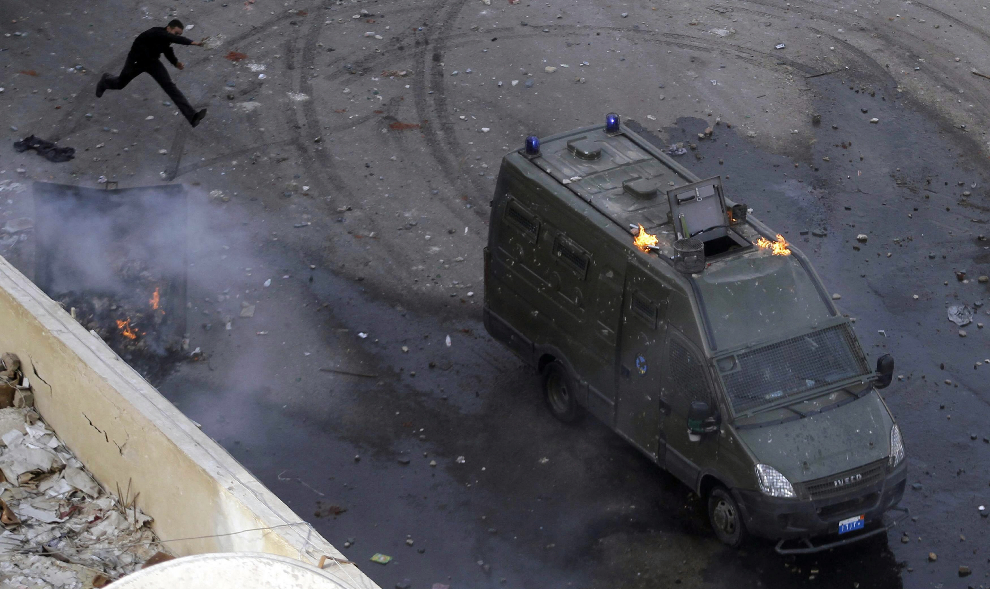
Protests had been particularly violent in the port city of Suez, 83 miles east of Cairo. On Thursday, Jan. 27, protesters attempted to firebomb a riot police car. Police in turn fired rubber bullets, water cannons, and tear gas at hundreds of demonstrators. At least one officer was killed in Suez that day. (Mohamed Abd El-Ghany/Reuters) #

A lone protester waves an Egyptian flag atop a lamp post in Liberation Square Tuesday, Feb. 1, as hundreds of thousands of compatriots call on President Mubarak to step down now. Mubarak has towered over Middle East politics for 30 years, assuming the presidency in 1981 when Anwar Sadat was assassinated, just yards from where Mubarak took cover. Sadat was killed for reaching out to the Israelis and signing the first peace treaty between the historic enemies. Mubarak has been one of the United States' most stalwart supporters in its quest for a more comprehensive Middle East peace. (Yannis Behrakis/Reuters) #
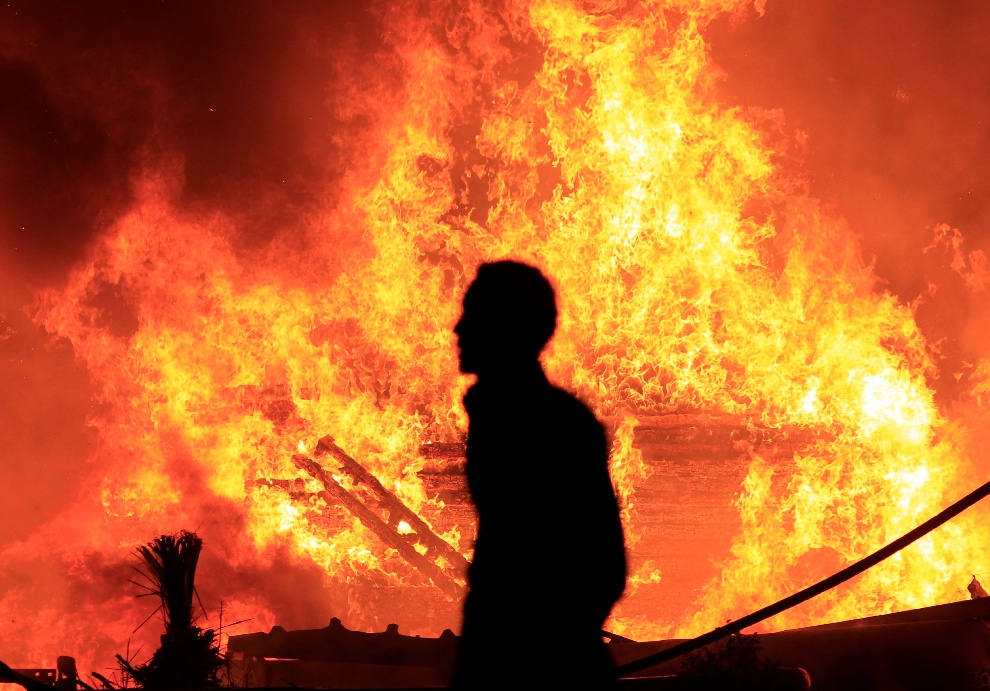
Protests turned violent in Cairo on Friday, Jan. 28, as huge, angry crowds packed the squares of downtown Cairo. By the end of the day, several police stations and the headquarters of President Mubarak's governing party were in flames. Mubarak ordered army troops into the cities in an attempt to support the much-hated police force and quell the violence. By midnight, the president, in a midnight speech, said he would fire his ministers and name a new Cabinet. That did little to slow the street uprising against him. (Goran Tomasevic/Reuters) #
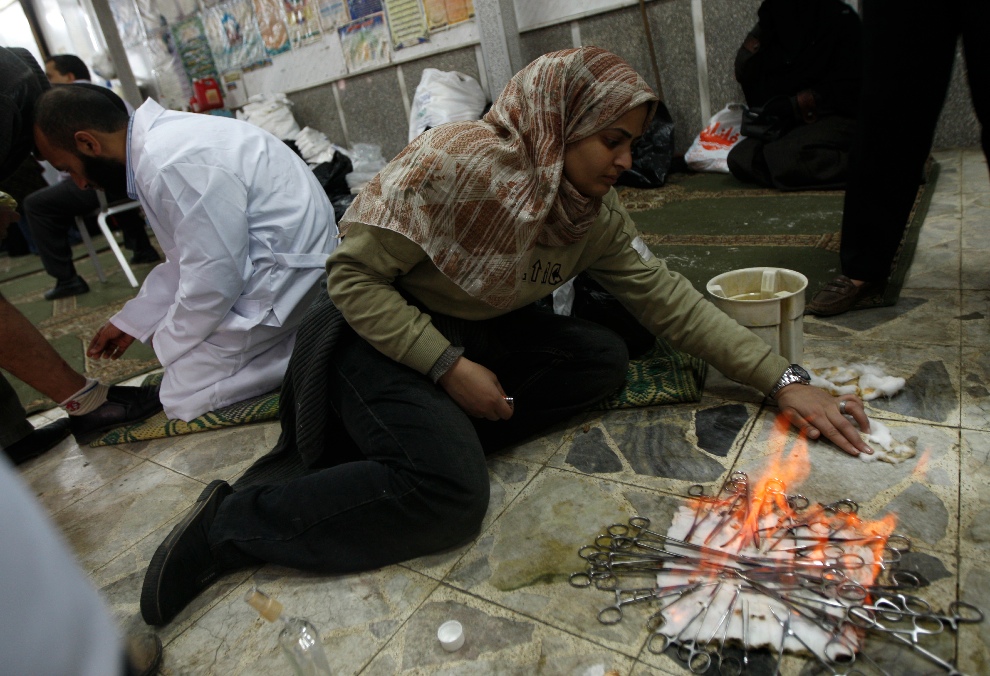
A woman sterilizes scissors as a doctor treats a wounded person in a Cairo mosque on Sunday, Jan. 30. Reports from aid agencies and charities suggest that 300 had died in the violence from Jan. 25 to Feb.1. "It's a very unconfirmed number," Rupert Colville, spokesman for the UN High Commissioner for Human Rights, told Bloomberg News. (Khalil Hamra/Associated Press) #

On Saturday, Jan. 29, it was reported that thousands of inmates from the Wadi Naturn prison had escaped. By then, most of the police force had abandoned the streets, leaving homeowners and shopkeepers to their own devices in Cairo. For many residents, this meant taking matters -- and weapons -- into their own hands. They formed neighborhood watch groups, armed with everything from PVC pipe to chains to guns. (Chris Hondros/Getty Images) #
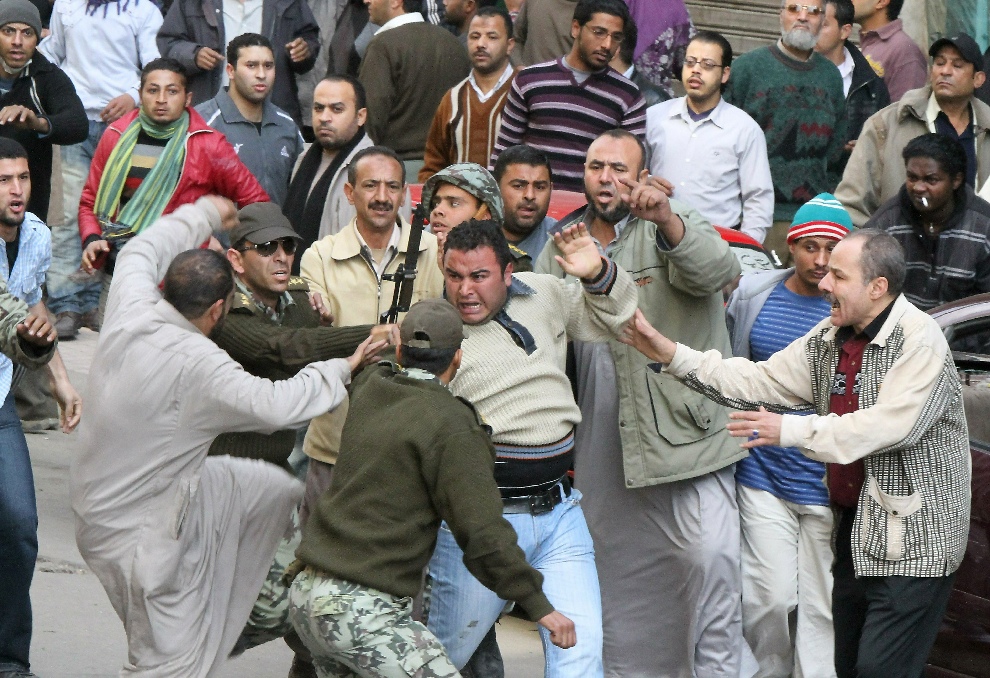
Egyptian soldiers try to protect a man from angry protesters who thought he was a plainclothes policeman on Monday, Jan. 31. The military is generally respected by the protesters; police officers, however, are reviled. Some protesters have said some undercover police officers have tried to infiltrate opposition groups in an attempt to create violence and gather information. (Khaled Desouki/AFP/Getty Images) #
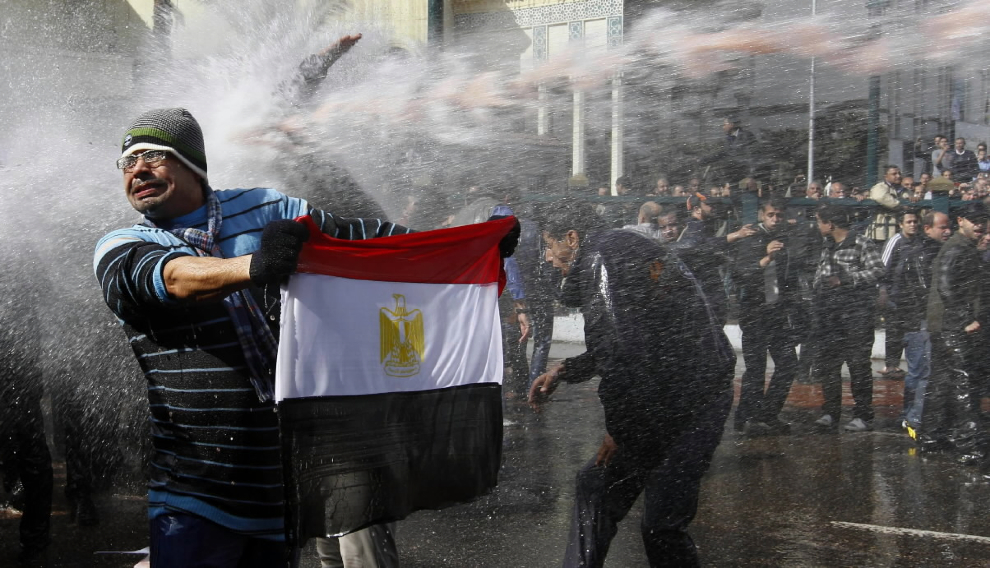
A protester holds an Egyptian flag as he dodges a blast from a water cannon during clashes in Cairo on Friday, Jan. 28, one of the most violent days of the street uprising so far. Tens of thousands took to the streets of Cairo. For much of the day, police and demonstrators fought running battles through the squares and back alleys of Egypt's capital. (Yannis Behrakis/Reuters) #

A soldiers directs demonstrators arriving at Liberation Square Tuesday morning, Feb. 1, in Cairo for the biggest demonstration of the uprising so far. More than a quarter-million people flooded into the heart of Cairo. The rally, which cut across lines of piety and party, was mostly peaceful. Middle East observers say the role of the military is key to how long President Mubarak will remain in power. Without its support, the president has little leverage. (Ahmed Ali/Associated Press) #

An army captain identified as Ihab Fathi holds the national flag while being carried by demonstrators during a protest Sunday, Jan. 31, in Liberation Square. As the days of protests continued, there were more and more examples of the military sympathizing with the aims of the protesters. (Marco Longari/AFP/Getty Images) #

The dozens of rallies have been alternatively tense, surreal, and frightful, and, at times, whimsical. In between chants against at the government of President Mubarak, demonstrators break out in a dance -- with one of them balancing a broom on his chin -- during a massive rally Tuesday, Feb. 1, at Liberation Square in Cairo. (Emilio Morenatti/Associated Press) #

On Saturday, Jan. 29, the army is sent into the streets to quell the protests, where they are greeted with cheers and open arms in some parts of the country, including Liberation Square in Cairo. The army is one of the most respected institutions in Egypt. By Monday, their leaders had vowed not to fire on protesters. (Chris Hondros/Getty Images) #
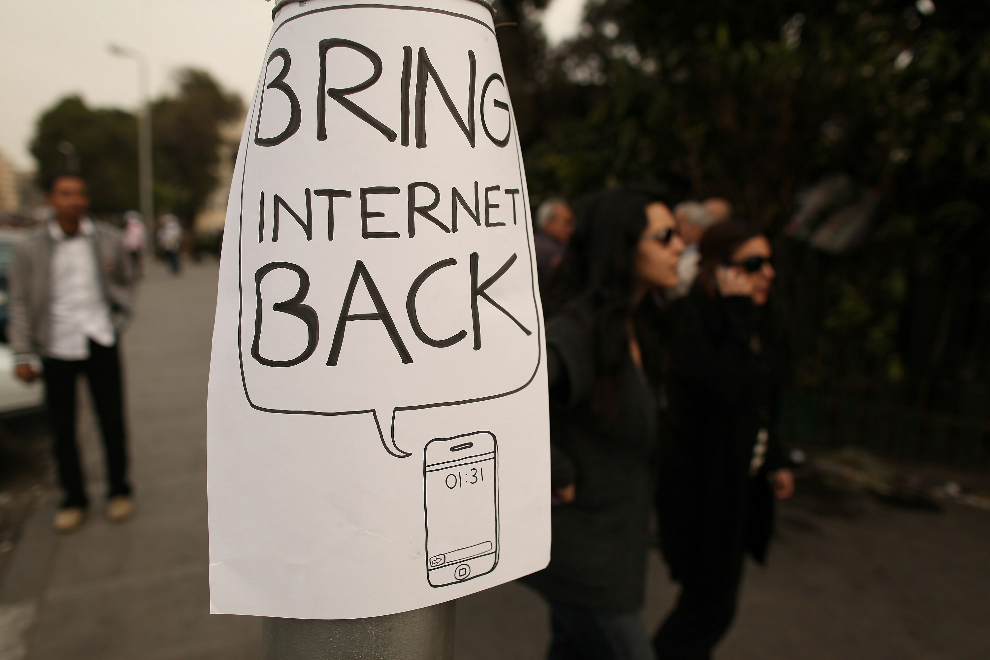
The battle between the government and protesters has not been limited to the streets and squares of cities. A cyber-skirmish has also broken out, as the government has blocked access to the Internet and Twitter. Protesters, who used Facebook and other websites as well as cellphones and instant messaging to coordinate rallies, retaliated by using special software that allowed them to circumvent the censorship. Some of the software was provided by Tor, a group based in Walpole, Mass. (Peter Macdiarmid/Getty Images) #

The unrest has created a chaotic situation at Cairo's international airport, as Americans and other foreigners sought to leave Egypt. Thousands of would-be passengers have been stranded as nations around the world scrambled to send in planes to fly their citizens out. By early this week, 3,100 US citizens had contacted the American Consulate. (Victoria Hazou/Associated Press) #
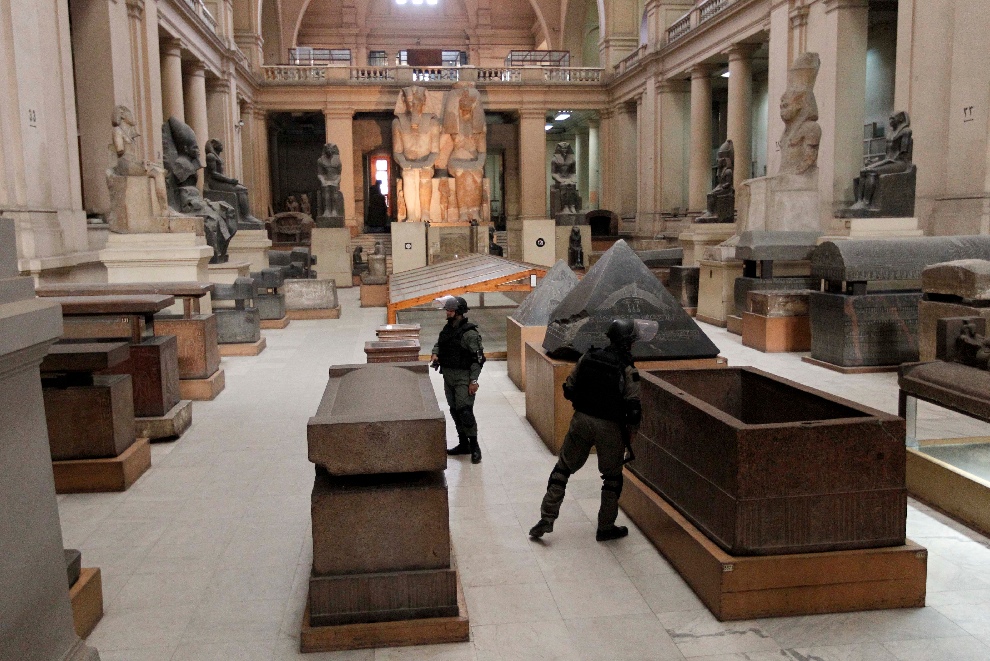
Egyptian special forces secure the main floor inside the Egyptian Museum in Cairo on Monday, Jan. 31. Would-be looters broke into the famed museum on Saturday ripping the heads off two mummies and damaging some artifacts before being caught and detained by army soldiers, Egypt's antiquities chief Zahi Hawass said the prized collection is secure from thieves and under military guard.(Tara Todras-Whitehill/Associated Press)#
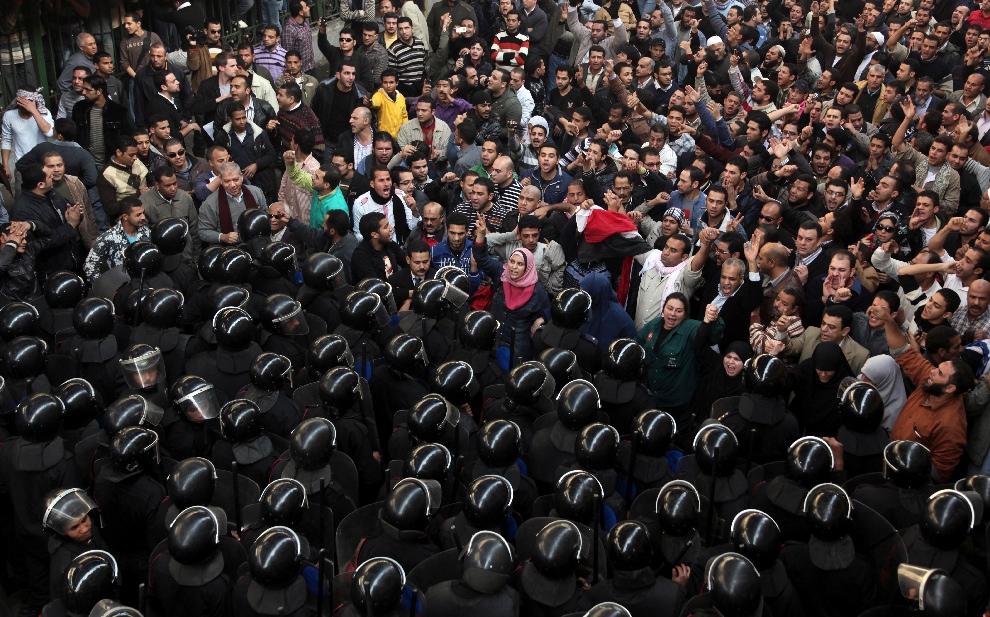
The lines of confrontation are stark on one of the most violent days of the protests: Friday, Jan. 28, in Cairo. Tens of thousands of anti-government protesters stoned police, who fired back with rubber bullets, tear gas, and water cannons. What began days earlier as scattered protests has coalesced into a powerful movement shaking the foundation of Egypt's government, with ripples crossing the Middle East. (Victoria Hazou/Associated Press) #
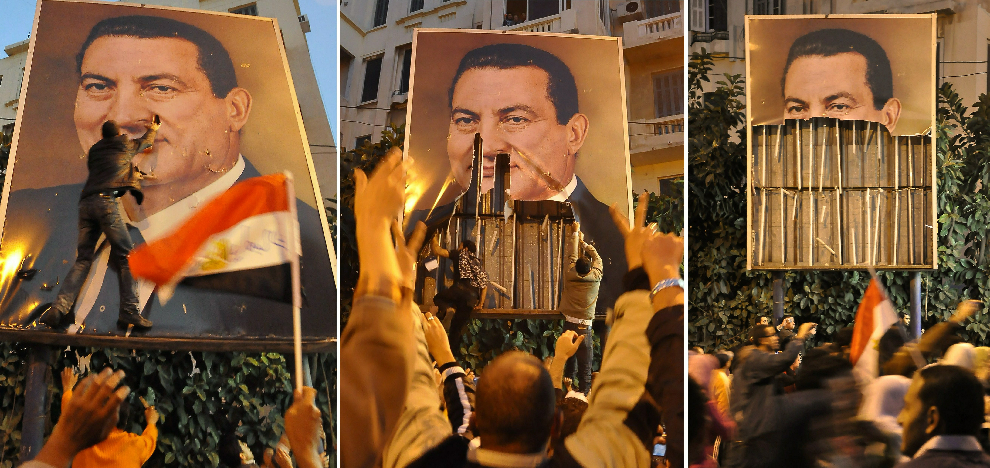
In a series of photos on Thursday, Jan. 27, demonstrators in the port city of Alexandria dismantle the image of a dominant force in the Middle East in the past quarter century -- Hosni Mubarak. In the days that followed, the support from within Egypt and throughout the world for Mubarak would similarly evaporate. (AFP/Getty Images) #
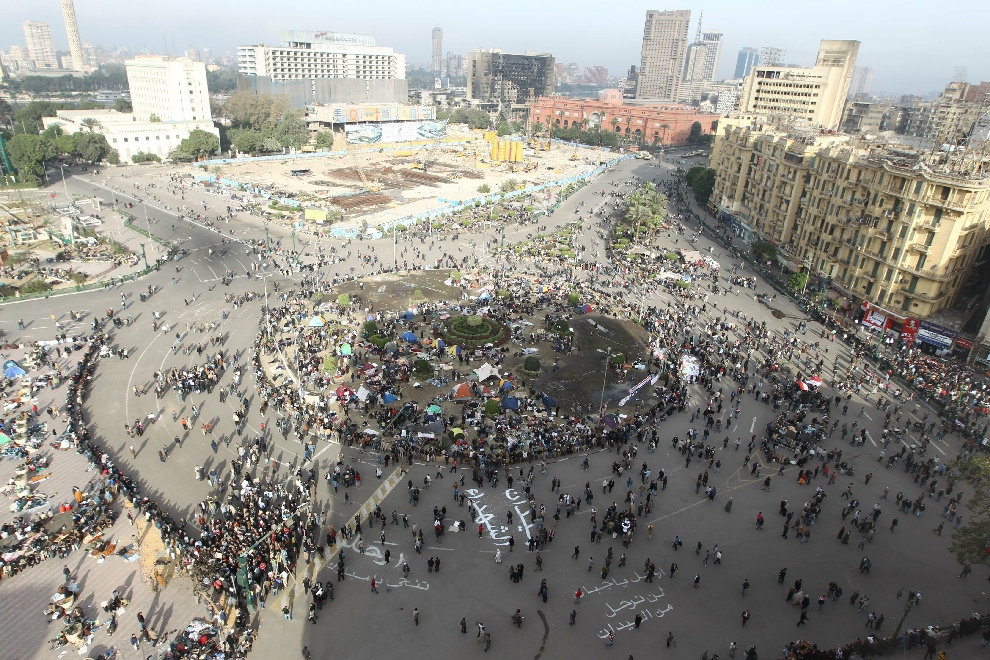
The day of protest on Tuesday starts early for many Egyptians, as thousands begin to converge on Liberation Square, also known as Tahrir Square. Many of the protesters had camped out in the square the night before. By the end of the day, 250,000 demonstrators would fill the area. (Khaled Desouki/AFP/Getty Images) #
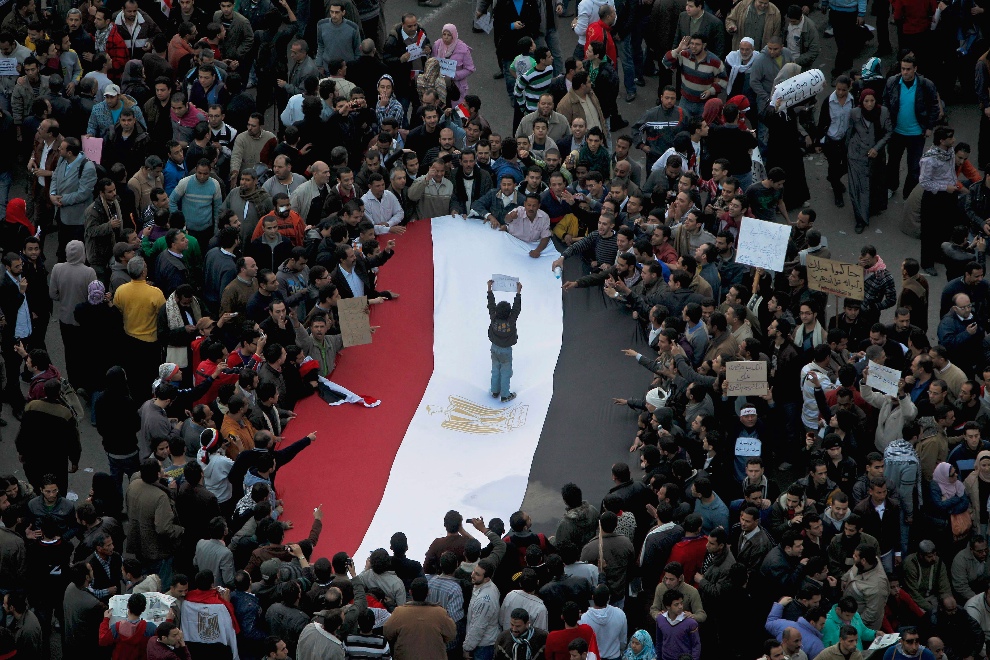
Liberation Square in Cairo has been ground zero for a series of government-rattling protests across Egypt. On Tuesday, the largest crowd yet -- a quarter million people -- gathers on the square as a youth stands on Egypt's national flag. For the protesters, the rally capped a week of an unceasing, and sometimes violent, push to force the ouster of President Hosni Mubarak after nearly 30 years in power. (Tara Todras-Whitehill/Associated Press) #
'기타 보관함 > 다른작가사진' 카테고리의 다른 글
| Protest spreads in the Middle East (0) | 2011.02.11 |
|---|---|
| Winter sports beat winter blues (0) | 2011.02.08 |
| Afghanistan, January 2011 (0) | 2011.02.08 |
| 중국의 설날풍경 (0) | 2011.02.08 |
| 내쇼날지오그래픽 (0) | 2010.04.06 |


